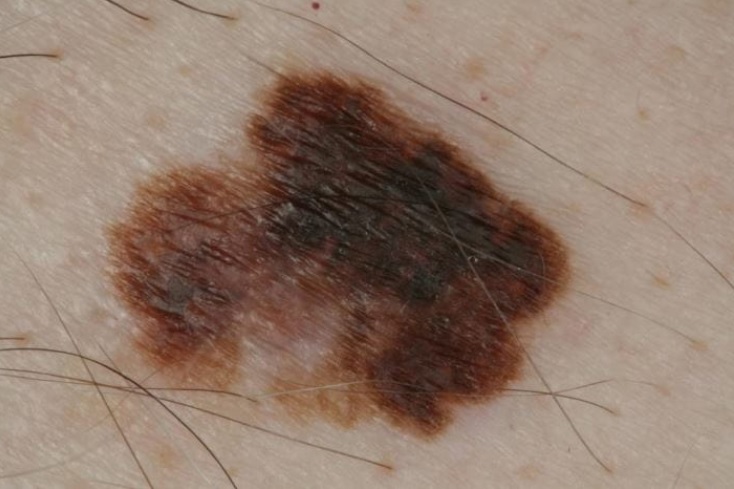Superficial spreading malignant melanoma (MDS) is a common subtype of melanoma, a type of cancer that begins in the cells (melanocytes) that control skin pigment. MDS accounts for approximately 2/3 of melanoma cases. It is mainly localized on the trunk of men and on the legs of women, it is more frequent in women and more frequently affects young people with an average age of around 44 years. Often, this type of melanoma results from the degeneration of pre-existing nevi.

MDS is characterized by its asymmetry, irregular contours (often indented with invaginations and bumps), and variegated pigmentation. The latter can often include blue, brown, pink or discolored areas. This type of melanoma has a fairly rapid initial radial growth, which is superficial and horizontal, spreading laterally along the surface of the skin.
In advanced cases, MDS can progress to the “vertical” growth phase in which the cancer begins to grow deep into the skin, including affecting the deep layers of the dermis and subcutis. At this point, nodular areas raised above the skin level may appear on its surface.
The diagnosis of MDS is usually made through a physical examination of the skin, but in doubtful cases, dermatoscopy can be decisive. If it is suspected that the cancer has spread, further tests may be needed.
Treatment for MDS can vary depending on the stage of the cancer and its location, but often includes surgical removal of the lesion and surrounding area. If the cancer has spread, you may need more aggressive treatment, such as chemotherapy, immunotherapy, or radiation therapy.
Early diagnosis and prompt treatment of melanoma can greatly improve a person’s outlook. For this reason, it is recommended that you do regular skin self-exams and see a doctor if you notice any suspicious changes.